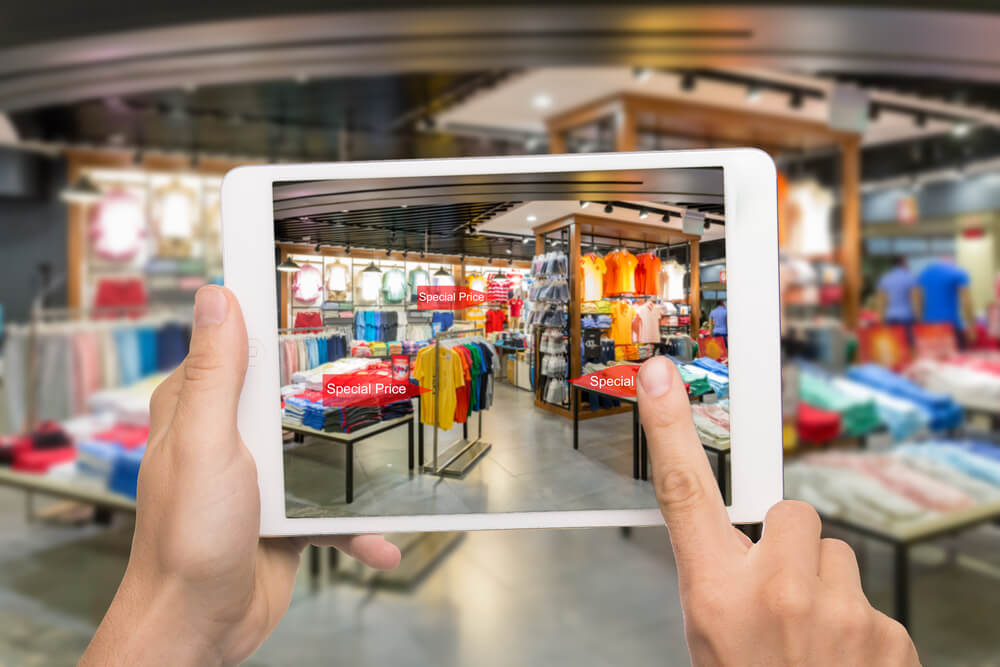The retail industry is constantly evolving, and in the current economic environment, retailers face unique challenges. From the impact of the COVID-19 pandemic to changing consumer behaviours and preferences, retailers must adapt and strategize to not only survive but thrive.
This article explores essential tips for retailers to successfully navigate the current economic landscape.
Embrace omnichannel retailing
Omnichannel retailing has become a crucial strategy for retailers. Today’s tech-savvy customers expect to interact with their favourite brands in various ways:
- Using smartphone apps to compare prices or download a coupon
- Receiving push notifications or special offers tailored to their needs
- Accessing interactive catalogues online
- Sharing stories and making purchases via social media
- Using an in-store price-checker
- Buying online and picking-up in store
- Buying in-store and having purchases delivered.
Every interaction, regardless of channel, should be seamless and simple for customers. With the combination of data and technology such as tokenisation, you can gain a single view of your customers and provide a seamless shopping experience. Providing an omnichannel experience makes good business sense too. A study of 46,000 shoppers found that omnichannel shoppers were more loyal and spent more with every additional channel they used.
How to give your business the omnichannel retail edge:
- Invest in a robust e-commerce platform like Eway
- Optimise your website for mobile devices
- Synchronise inventory management systems across all channels
- Embrace technologies such as click and collect
Read more:
How to create a winning omnichannel retail strategy
Personalise the customer experience
Customers crave personalised experiences. You can leverage customer data to gain insights into their preferences, behaviours, and purchase history. This information will help you provide personalised recommendations, targeted marketing campaigns, and tailored promotions to specific demographics, and even individuals. Implement loyalty programs to reward and retain customers, creating a sense of exclusivity and fostering long-term relationships.
According to McKinsey & Company, personalisation increases sales and sales conversion, customer satisfaction and employee engagement, while lowering marketing and sales costs.
Enhance in-store shopping experiences
While online shopping continues to grow, customers who choose to shop in person are looking for more than a purely transactional experience. They want to touch, feel and see the product – taste the coffee, try the clothes on for size, and smell the perfume.
To give your customers the best possible in-store experience – and keep them coming back for more – focus on creating an engaging and immersive environment.
- Provide a pleasant shopping environment with plenty of light and room to move. Invest in user-friendly, clean and modern displays, signage and furniture. And don’t stint on the housekeeping – keep things clean and tidy at all times.
- Incorporate interactive displays, augmented reality (AR), or virtual reality (VR) technologies to provide unique experiences that cannot be replicated online. This could be as simple as displaying QR codes that provide more information, bonus tips, or special offers.
- Provide a positive and supportive workplace for your staff. Well-trained staff who provide exceptional customer service can significantly impact the in-store experience and increase your sales.
Optimise inventory management
Efficient inventory management plays a pivotal role in retail success. Data analytics enable retailers to forecast demand, identify customer trends, and accurately predict which products are likely to sell well during specific periods. This data-driven approach reduces the risk of over- or understocking items.
Automated inventory management systems are a game-changer for retailers looking to streamline their operations. These advanced systems can track inventory levels in real-time, and automatically reorder products when they reach a specific threshold. Automated solutions minimise manual errors, save time, and ensure popular items are always available.
In the current climate, where supply chains have been disrupted, adopting just-in-time (JIT) inventory practices can help. With JIT, you can receive goods from suppliers as and when they’re needed for sale, rather than stockpiling large quantities of inventory in advance. By staying flexible and agile, you can respond quickly to changing market conditions, meeting your customers’ needs even in uncertain times.
Embrace sustainability
As consumers become more environmentally and socially aware, sustainability has become a key factor influencing their purchasing decisions. Embracing sustainability practices is not only beneficial for the planet and society but also a strategic move to attract and retain customers.
Sustainable practices for your business:
- Eco-friendly packaging: Transition to biodegradable, recyclable, or compostable packaging options.
- Reduce waste: Work towards reducing waste in your operations. Implement recycling and waste reduction programs to cut down on the amount of discarded materials and promote a circular economy.
- Offer sustainable product options: Source products from suppliers with strong sustainability practices or offer products made from recycled materials.
- Be transparent: Use your website, packaging, and marketing materials to showcase your commitment to sustainability and provide details about the steps you are taking to reduce your environmental impact.
Engaging customers in your sustainability journey can strengthen brand loyalty, create a sense of community and foster a positive reputation for your business.
Leverage social media
In the digital age, social media platforms have evolved into powerful marketing tools that offer retailers unprecedented opportunities to connect with their target audience and drive business growth.
Establishing a strong social media presence:
- Identify the platforms that align with your target audience’s preferences and behaviours. Each platform caters to different demographics and interests, so conduct thorough research to determine where your potential customers spend the most time.
- Develop a content strategy. High-quality visuals, captivating videos, and compelling storytelling are essential components of a successful social media presence.
- Create informative and valuable content. Provide useful tips, industry insights, product demonstrations, and behind-the-scenes glimpses to keep your audience informed and engaged. Offering valuable content will position you as an authority in your niche and build trust, brand loyalty and customer retention.
Prioritise cybersecurity
With the rise in online transactions and the increasing reliance on digital platforms, the risk of cybersecurity threats has grown substantially. Take proactive steps to safeguard your customers’ sensitive data and protect your own business operations from potential breaches. Prioritising cybersecurity ensures compliance with data protection regulations, plus helps build trust and maintain a loyal customer base.
To protect customer data and financial information, invest in robust security measures. One of the essential components of securing online transactions is using a secure payment gateway. Eway employs advanced encryption techniques to protect payment information during transmission, reducing the risk of unauthorised access or interception.
Read more:
How to keep your customers’ information secure while taking payments
Make payments effortless
Providing a seamless and convenient payment experience for customers is crucial for businesses to not only survive, but thrive. Eway enables businesses to accept payments securely and effortlessly, making the checkout process a breeze for customers. With Eway’s user-friendly interface and robust security features, you can offer a variety of payment options, including credit cards, digital wallets, and in-person payments, catering to the diverse preferences of modern consumers.
Eway’s cutting-edge technology can build trust with consumers, boost customer satisfaction, and ultimately drive sales. In the current climate, where online and contactless transactions have become the norm, integrating Eway into your payment ecosystem can give your retail business a competitive edge and set you on the path to success.
To find out more about how we can help your retail business to thrive, get in touch today.


Subscribe to updates
Get the latest news and payment insights from Eway hot off the press.



